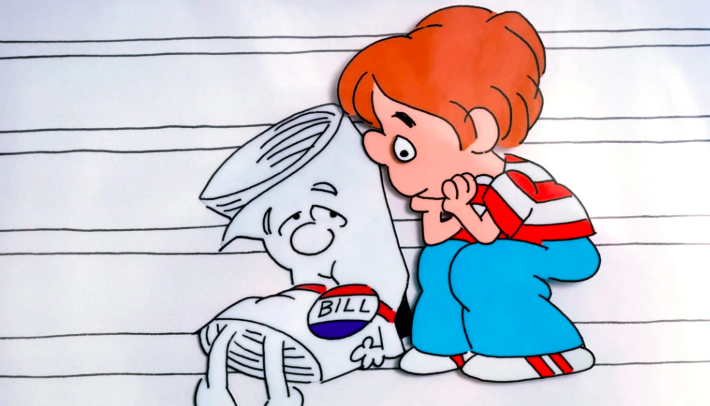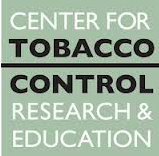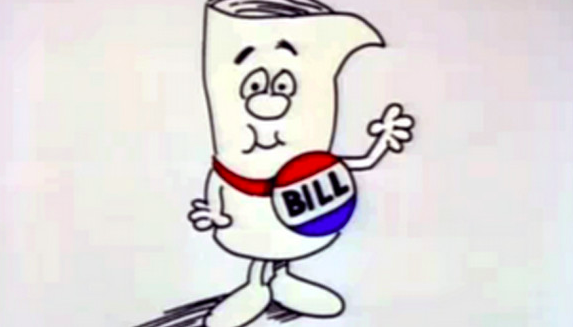 June 12, 2019 Most of us remember the classic School House Rock, “I’m just a bill, yes I’m only a bill and I’m sitting here on Capitol Hill…” but maybe we need a new version that talks about how a bill is killed with a thousand paper cuts painfully sliced into vapid, ineffective nothingness by industry goodwashing yet still SOUNDS like a reasonable regulatory response?
June 12, 2019 Most of us remember the classic School House Rock, “I’m just a bill, yes I’m only a bill and I’m sitting here on Capitol Hill…” but maybe we need a new version that talks about how a bill is killed with a thousand paper cuts painfully sliced into vapid, ineffective nothingness by industry goodwashing yet still SOUNDS like a reasonable regulatory response?
Such is the case with the recent CA Senate Bill 38 originally banning flavored tobacco items and e-cig vaping then watered down with vested interests, which UCSF’s Center for Tobacco Control and Research Center blasted pointblank as being purposefully vague and misleading.
There’s consistent trickery with predatory practices undermining the very laws voters set in place to protect youth as UCSF’s Dr. Stanton Glantz explains,
 “This language is purposefully obscure. In fact, many voters may be mislead into thinking that the Juul initiative strengthens e-cigarette regulation in San Francisco.
“This language is purposefully obscure. In fact, many voters may be mislead into thinking that the Juul initiative strengthens e-cigarette regulation in San Francisco.
The truth is just the opposite. Put into plain language, Juul’s law would preempt and overrule existing laws, including the City’s ban on flavored tobacco products, including e-cigarettes. (Voters upheld the flavor ban when 68% voted for Proposition E despite a $12 million industry campaign against it.)
Juul’s initiative would also override the the City’s Tobacco 21 law and pending legislation that would prohibit the sale of e-cigarettes in San Francisco until the FDA issues an order authorizing their sale. It would also make enforcing youth access laws impossible by requiring that enforcement agencies prove that a retailer “knowingly” sold e-cigs to people under 21.”
So? In part one on goodwashing we looked at the tobacco industry’s cessation spin and sly demographic switch from youth to adults in advertising, part two takes the goodwashing into the legislative arena, to educate youth early and often on how to ‘close read’ ballot measures and media messages zinging around their sphere and inoculate them with health literacy.
From reproductive rights and school shootings to vaping and cannabis laws, youth need the media literacy and critical thinking skill sets to deconstruct bills and laws that will impact their daily lives.
Call it a “spot the spin” challenge…Gamify it if you wish…As Crosby, Stills, Nash & Young would sing, “teach your children well.”
When Yes Means No On the Ballot
Once upon a time, in my youthful rush, I admit I’d often ditch the ‘fine print’ on the ballot and cut to the chase in a shortcut lens of “who’s supporting it, who’s not” before speed reading the substantive stuff.
It was actually a fairly accurate tried and true tactic reflecting my own alliances and cutting through the muck of those “yes means no and vice versa” initiatives that always left my head spinning trying to sort out what was REALLY being said.
 Now? The spin-spotting gets even hazier as lines are blurred and melted into mush turning public health regulatory efforts into nonsense with loophole lingo supporting politicians ensnared by tobacco donors and pay for play antics that keep them in power.
Now? The spin-spotting gets even hazier as lines are blurred and melted into mush turning public health regulatory efforts into nonsense with loophole lingo supporting politicians ensnared by tobacco donors and pay for play antics that keep them in power.
As a San Mateo County voter, I’ve watched Supervisor Jerry Hill battle for kids health banning flavored tobacco products hooking kids on nicotine in a speedy surge, only to see him finally withdraw his entire bill due to the devolved drek it turned into with lobbyist amendments exempting hookah lounges on the basis of “cultural tradition,” where he wryly offered,
“I find it hard to believe that use of gummy bear and bubble gum-flavored tobacco in any form is a cultural tradition.”
The American Lung Association in California, the American Heart Association and the American Cancer Society Cancer Action Network all pulled their support too, preferring to start anew rather than accept the heavily lobbied lip-service that purports compromise yet continues to enable predatory marketing for an entirely new generation placing profit over public health. Hill summed, “Until legislators stand up to a powerful industry lobby and others who seek to sell flavored tobacco products, we’ll have to rely on our cities to ban these sales.”
Now fast forward to the national level where we have a front row view of reckless, feckless “federal mandates” coming from folks like Kentucky tobacco state rep and Mitch McConnell with his Tobacco 21 legislation.
Why is Tobacco 21 a Trap?
 As UCSF’s Dr. Glantz sums in cliff notes style, citing the prior Synar amendment aimed at curbing youth tobacco access says,
As UCSF’s Dr. Glantz sums in cliff notes style, citing the prior Synar amendment aimed at curbing youth tobacco access says,
“The McConnell bill could start that process all over again by creating a rush to pass state legislation raising the age to 21 together with a lot of bad technical details that will actually make it easier for Juul, Philip Morris, and RJ Reynolds to continue preying on kids by simply overwhelming the health groups in state legislatures.”
McConnell’s legislation might as well be a health literacy show-n-tell on HOW industry backed bills shamelessly take the teeth out of any large scale ‘regulatory’ effort with PR fluff and stuff to drive it into convoluted state by state quagmires sinking any hopes of placing fragile adolescent developmental health concerns above corporate coffers.
Vaping’s Lure and Lie Tactics
Youth are being conned with Juul and the entire tobacco industry’s lure and lie tactics that it’s all ‘safer’ when “Generation Vape” is now full fledge addicted to a level of nicotine and chemical toxins in amounts that are not even LEGAL for purchase in Europe and other countries, age 21 or otherwise.
While adults make a mint selling toxic chem cocktails in the form of flavored vaping positioned by lobbyists as “less harmful than tobacco” to hook ‘em early and often, youth are being served a crock of manure, duped into believing Juul and its ilk are ‘doing the right thing’ complying with health concerns, simultaneously tamping down new and mounting research on vaping harms constantly being blocked, buried and blown off in a cynical narrative that it’s “healthier than tobacco.”
Um…Reminder…false equivalency. Youth were not smoking tobacco, given a two decade downturn in use…now with vaping and smoking seeding the nicotine fix there’s an uptick again. And now the CDC reports an increase in e-cig use among high schoolers up 78% in just one year between 2017-2018. Just ducky.
Youth, when given the actual FACTS and stats on Juuling and vaping harm can self-inform with peer to peer viral marketing and a clarion call for social shunning… alas, they are not only NOT being given all the data, they’re being served countless smokescreens and strategic triggers to tap into a rebel yell, deployed and seeded by a ruthlessly rampant tobacco industry hellbent on selling a sneaky narrative. In fact, I’d argue some of these ‘ban’ bills are creating a market driven allure playing right into the hands of industry, as teens don’t like to be ‘regulated’ in any manner…
So, what’s a concerned voter, parent, youth advocate, or health literacy pro to do?
Media Literacy Meets Health Literacy and Civics
Start with using media literacy tactics and critical thinking to challenge youth to spot the spin in what LOOKS like a health initiative but is really an industry backed effort to take the teeth out of any watchdog woofing.
-
Where did the bill start and who did the sponsoring? What was taken out? What was put in?
-
If there is research cited in amendments, who is funding it?
-
What health advocacy groups are backing it? Who is shunning it?
-
What lobbyists are involved and how much are they spending to amplify and/or kill a bill?
-
Which politicians are receiving tobacco money and donations from vested interests with crossover concerns?
-
What are some of the solutions being put forth as alternatives to the bill?
-
Are there stronger alternatives or adjunct legislative measures being put forth simultaneously with different agencies and calls for regulation and oversight involved?
-
Is the bill a stand alone or is it ‘kitchen sinked’ with a bunch of other vested interests to yield a given outcome?
-
Is there another angle or approach more effective than a bill, outlining the nefarious antics involved with industry advertising and lack of oversight by the FDA?
-
Ask students to find examples from their own worlds, using media and technology tools to spot the spin in the wild…from Snapchat to Insta influencers…
-
Query students as to who THEY think will protest a given bill or piece of legislation the most…Who will embrace it and why? Follow it through the approval process…gamify with conjecture.
-
Blend in civics, media literacy, and current events with ‘boots on the ground’ reporting of peer to peer cases where youth are ‘hooked’ and want to stop vs kids who argue it’s their right to Juul and vape regardless of the toxicity and new heart attack findings and secondhand pollution into other youth bodies
-
Take a “point/counterpoint” approach so youth see “all sides” and begin to sift and sort the facts and harm for themselves.
-
Have vapers and non-vaping youth read and react to exposes and determine for themselves who’s dancing on the edge of the truth, masking the intent of industry giants…
As students sound off, poke holes in the arguments and turn the educational topic into a health literacy exercise the truth starts to seep in on their own terms…and THAT is where they learn the most.
Finally…it’s always interesting to hear youth sound off with their voices and views on who’s failing or succeeding in health outreach…and WHY…
Personally, I think the ominous tonality and fear-mongering style of large public service style campaigns are largely ineffective, as that’s a fast tune out in my world of testing applied science and youth counter-marketing. But this is why media literacy and health literacy become a ‘point/counterpoint’ style of dialogue when handled well, as we can all learn from each other.
Several vapers I already have interviewed ‘had heard’ that one Juul was the nicotine equivalent of a full pack of cigarettes, and mentioned both the muppet puppet style truth campaign ads, and the PSA style brain poison positioning from ‘FlavorsHookKids.org’ as similar to the old retro “this is your brain on drugs” campaign.
Consensus with volume vapers now hooked into this culture? “That’s not gonna convince me why I shouldn’t Juul…”
What will? The cost? (fiscal and physical?) Juul’s erectile dysfunction? Secondhand smoke and social shunning? Education? If so, from whom? And delivered via what media and distribution channel? Sound off with your ideas, ping me on Twitter if you’d like to be interviewed…In the next post, health experts and youth themselves (vapers and non-smokers) will weigh in…
Meanwhile, be alert to the backsliding of bogus bills that start as one thing and end as another, now slithering their way through the house and hiding on the floor in full view…









Amy…thanks for writing this piece and exposing this terrible new addiction tool….it’s capturing and hurting our youth and we can’t let that happen. I’ve been involved in the AHA’s CA initiatives and I know firsthand how diabolical this is. Keep telling the story and being such a great advocate.
h
Thx, Hank…As ad agency/branding pros, I’m sure you’d agree it’s beyond nefarious to see the very strategic “pack of lies” and triggers being brazenly deployed staying one step ahead of the regulatory net…
I’ve been trying to get “all voices” into the mix here and the next two parts of this series involve vapers and non-vapers weighing in on the youth front, as it has indeed become a “did you know” knowledge dropping test for me and it’s astonishing how these kids have been lured and baited with misinformation on the ‘less than’ front w/medical false equivalencies and new research on the harm just now starting to surface that is deeply shoulder shaking them into a wake up call, albeit a bit late on the nicotine toxin triage/addiction loop.
p.s. I’ve also been talking w/some UK youth “influencers” who note Juul is NOTHING by comparison in traction over there…yet. (which of course smacks of worrisome opportunistic expansion, tho the US corp coffers/pay for play politicians make the job soooooo much easier over here to get by with predatory marketing like this) Bleh.
Thanks for all YOU do and let me know how I can help your efforts at AHA!
p.s. Here’s part one of the piece in case you didn’t see it:
https://shapingyouth.org/juuls-bait-and-switch-demographics-blitz-tv-with-goodwashing/
I sure will Amy…I’ll be meeting with my AHA colleagues next week on this subject and I’ll be sharing your excellent insights from this series…time to get “mad as hell and not take it any more!!!”
Talk soon.
h